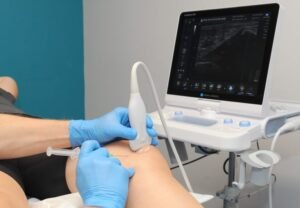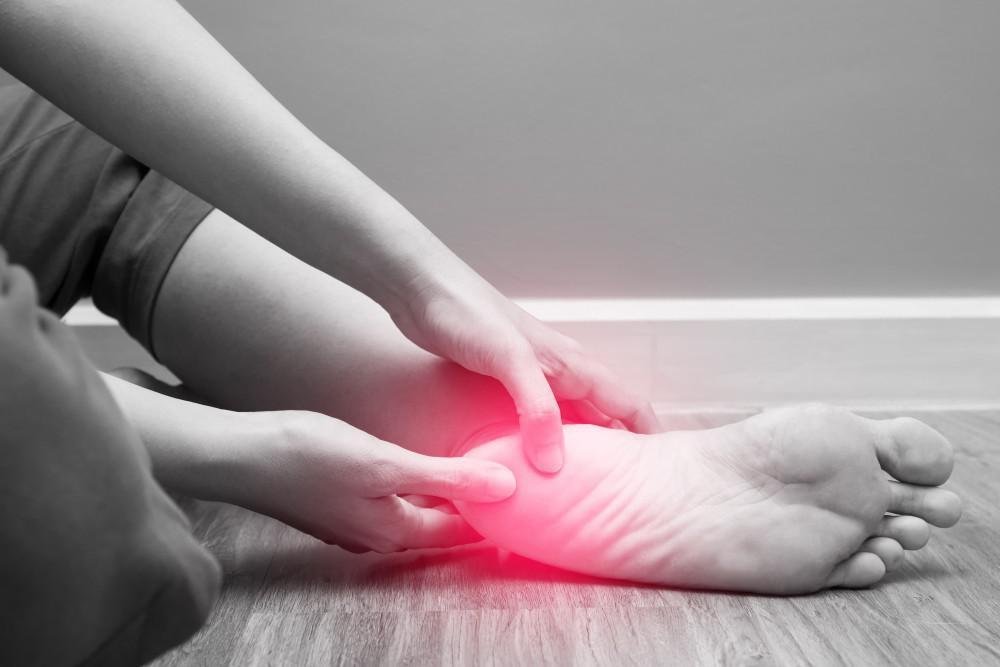Musculoskeletal Guided Injection
What is an ultrasound scan?
Ultrasound is a very high frequency vibration or sound wave that is passed into your body. As it passes through the tissues, a proportion of the wave is reflected from each of the layers of tissue. The scanner picks up the returning sound waves and processes them into an image.
How does ultrasound compare to X-rays, CT scans and MRI scans?
X-rays and CT scans are great for examining bones. Radiation is passed through the body, some is absorbed and the rest is used to make an image. The disadvantages of this are the exposure to radiation and they are not good for examining soft tissues which is commonly the source of musculoskeletal pain. MRI scans work in a very different way; The patient lies inside the scanner and a magnetic field is used to obtain the image.
MRI is effective for examining joints, muscles ligaments and tendons. However, relative to ultrasound they are expensive and the smaller scanners are the size of an articulated lorry trailer! Ultrasound scans are very safe, they do not use radiation and there are no risk factors or side effects when they are used to examine musculo-skeletal tissues. They are used to examine tendons, ligaments, joints and muscles, and have some significant advantages over MRI scans.
What are ultrasound scans used for?
Ultrasound scans are particularly useful for examining soft tissues (muscles, tendons, ligaments and joints) around the shoulder, arm, hand, knee, leg and foot. When used to examine superficial tissues like the Achilles tendon, they show more detail of the tissue structure. Unlike MRI, ultrasound can be used to examine a muscle or tendon while it is being moved or used. The sonographer can talk to you while doing the examination and you can say where your pain is and when the probe is over the painful part.
What is involved in the scan?
An ultrasound transducer is used to acquire the images. It has to be applied to your skin at the area that is being scanned and a water based gel is used to get good contact between you and the probe. The ultrasound is not painful at all and you will not be able to feel it. Sometimes the probe has to be pushed into the tissues a little and this can be a bit uncomfortable.
Steroid anaesthetic injections.
If you are struggling to get better and back to full function with physiotherapy alone, it may be possible to have a steroid injection to help settle your pain. Steroids (specifically Glucocorticoids) are very powerful anti-inflammatory substances. They can settle down a painful joint or other soft tissue and give you the opportunity to get on with your physiotherapy or training program. The steroids we use are not the same as those used to build muscle. We use these medications very cautiously and we will not recommend you to have large numbers of repeated injections.
Ultrasound guided injections.
If you need an injection to help you recover from an injury, it will work better if it is put into the right place. We can use ultrasound to guide the needle into exactly the right place for the injection to be most beneficial. There is lots of evidence to show that when injections are performed without guidance they are less accurate. If the injection is not in the right place it is less likely to work. We use ultrasound for almost all our injections.

Why use Fusion Healthcare for your musculoskeletal Guided Injection?
Our Diagnostic Ultrasound Scanning and Guided Injection is performed by NHS Qualified musculoskeletal Clinicians and includes a written radiology report and consultation. The price that we charge for the Musculoskeletal guided injection starts from £200.
For booking and prices, please email: aziz.ambia1@nhs.net, info@fusionhealthcare.co.uk or call: 07763875191 Out of hour: 07828634357





